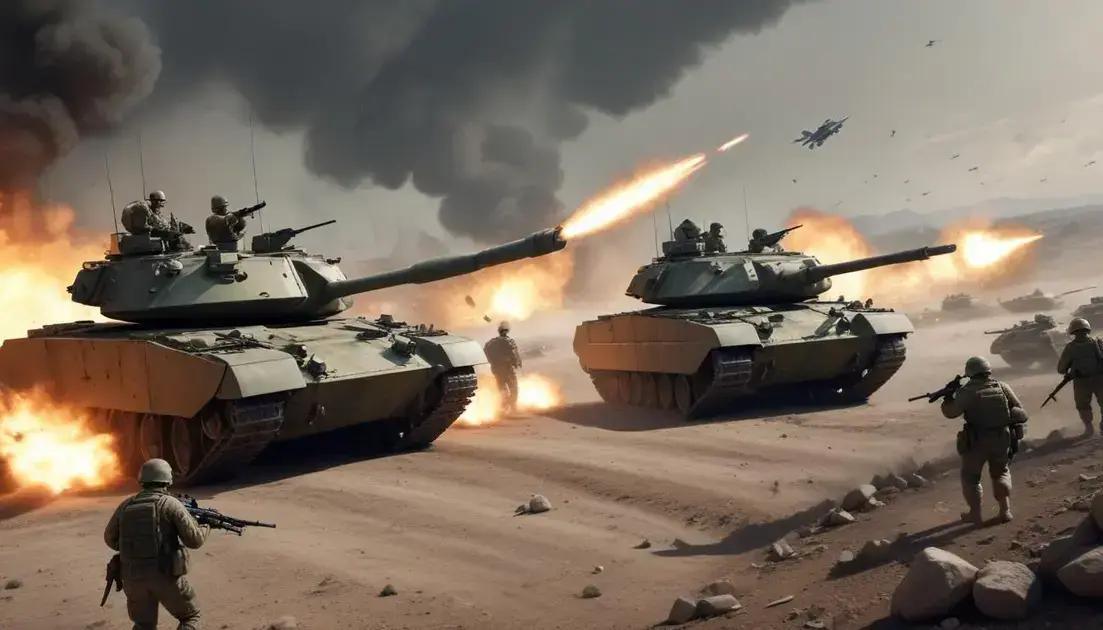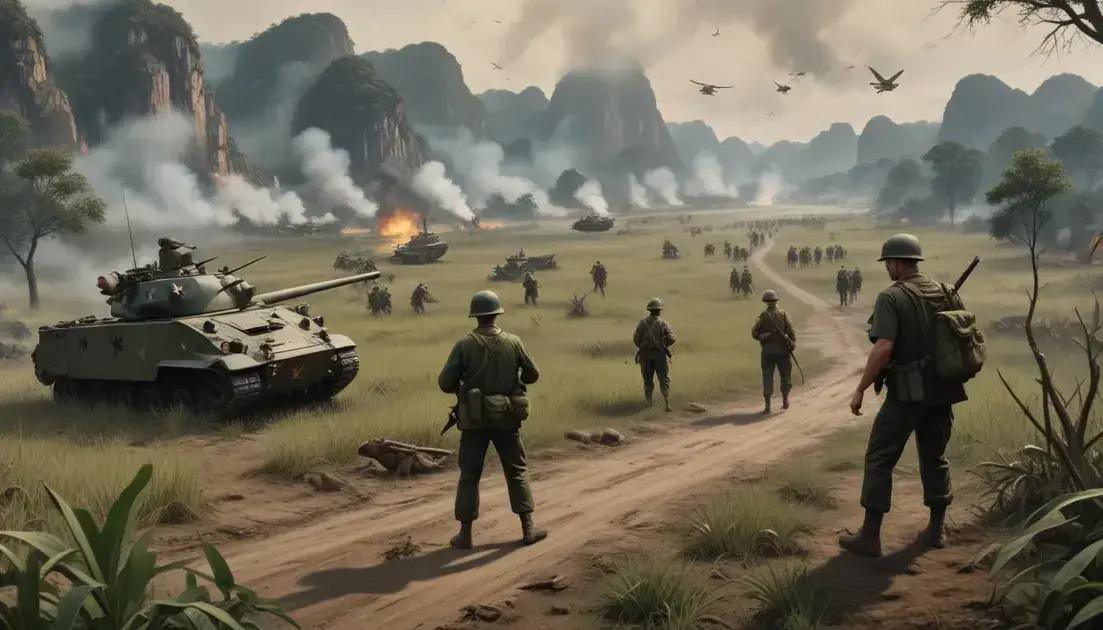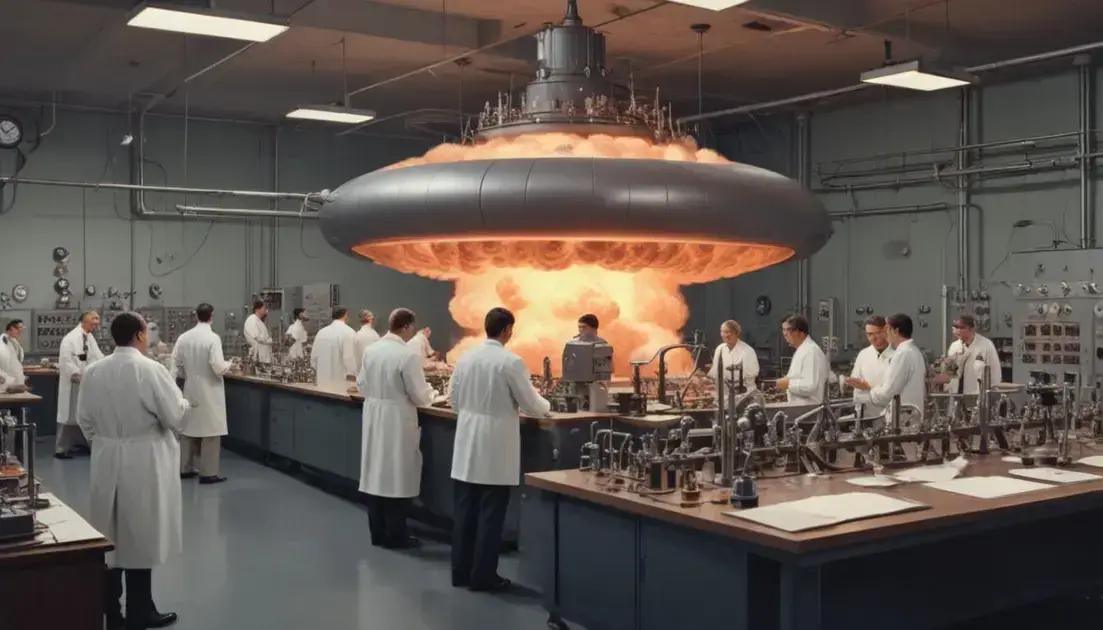
The arms race: chasing destruction
The arms race significantly impacts global security by driving nations to increase military spending, which can divert resources from essential public services. Conflicts result in civilian casualties and displacement, creating humanitarian crises that threaten regional stability. Furthermore, armed tensions can lead to heightened global threats, such as terrorism, and weaken diplomatic relations. Understanding these implications is crucial for fostering peace and security in an increasingly interconnected world.
In a world where arms race dominates global politics, the quest for security raises unsettling questions. How far will nations go to assert power?
Understanding the Arms Race
The arms race has shaped the world in many ways. Countries strive to gain power and security through military strength. This constant competition can lead to major conflicts. It often leaves nations questioning their safety and choices.
What is an Arms Race?
An arms race occurs when two or more countries build up their military capabilities. They do this to defend against threats or to show strength. This can involve increasing the number of weapons, developing new technologies, or enhancing military training.
Historical Context
Throughout history, arms races have had significant impacts. For example, the Cold War saw the United States and the Soviet Union competing fiercely. Both sides stocked up on nuclear weapons, creating a tense global climate.
Modern Examples
Today, nations still engage in arms races. Countries in regions like Asia and the Middle East invest heavily in their military. This can lead to unrest and anxiety among neighboring nations and the world.
The Consequences of an Arms Race
Arms races can cause instability and fear. As nations build their arsenals, they may feel more powerful and secure. However, this often leads to increased tensions and the risk of conflict. Diplomacy may be overlooked as countries focus on military strength, creating a cycle of distrust.
Arms races not only affect governments. They impact civilians, too. Increased military presence can lead to fear and uncertainty in local communities. Understanding the implications of an arms race is crucial for promoting peace and security.
The Impact of Destruction
Destruction from armed conflicts can deeply affect societies. It often leads to loss of life, homes, and stability. Families are torn apart, and communities are left in ruins. The human cost is staggering and lasts long after the fighting stops.
Effects on People
People suffer during and after conflicts. Many become refugees, fleeing their homes in search of safety. This creates huge challenges for neighboring countries. They must provide support and resources for those in need.
Economic Damage
Destruction also harms economies. Businesses close, jobs disappear, and trade slows down. Rebuilding takes time and resources, which can be scarce in war-torn areas. This makes recovery even harder for everyone involved.
Environmental Consequences
Conflicts can damage the environment. Bombing and warfare lead to pollution and destruction of natural resources. This can ruin local ecosystems and agriculture, making it difficult for communities to survive.
Long-term Consequences
The impact of destruction is long-lasting. Psychological effects can continue for generations. Survivors may struggle with trauma and mental health issues. Therefore, addressing these issues is crucial for recovery.
Building peace and stability takes time and effort. It involves healing communities, supporting economies, and restoring the environment. Understanding the full impact of destruction is key to fostering a better future.
Security Implications of Armed Conflicts
Armed conflicts have major security implications for nations involved. They change power dynamics and can lead to regional instability. When one country engages in conflict, it often raises fears in neighboring nations.
Increased Military Spending
Countries often respond to conflicts by boosting their military. They feel the need to protect themselves. This increased spending diverts funds from essential services like education and healthcare.
Threats to Civilians
During conflicts, civilians face great risks. They may experience violence, displacement, and loss of resources. Armed conflicts can lead to humanitarian crises, where basic needs like food and water become scarce.
Global Security Concerns
Conflicts can cause ripple effects worldwide. Terrorism and extremism can flourish in unstable regions. This creates a global security threat, as groups may plan attacks beyond their borders.
Diplomacy at Risk
Armed conflicts strain diplomatic relations. Countries may find it hard to negotiate or cooperate when tensions are high. This can make resolving issues more difficult.
Understanding the security implications of armed conflicts is critical. It helps nations prepare and respond effectively to future threats. Moreover, it emphasizes the need for conflict resolution and peace efforts.
Conclusion
In conclusion, understanding the security implications of armed conflicts is vital for nations and communities alike. Conflicts not only disrupt lives but also reshape power dynamics and global stability. When countries boost their military spending, they may overlook critical needs like health and education.
The impact on civilians cannot be ignored, as they often bear the brunt of violence and displacement. Furthermore, armed conflicts can lead to global threats like terrorism and hinder diplomatic efforts. To build a safer future, nations must prioritize peaceful resolutions and conflict prevention.
By recognizing these implications, we can work together to create a more secure world where dialogue and cooperation replace violence. Ultimately, peace is the best path to safety and prosperity for all.


